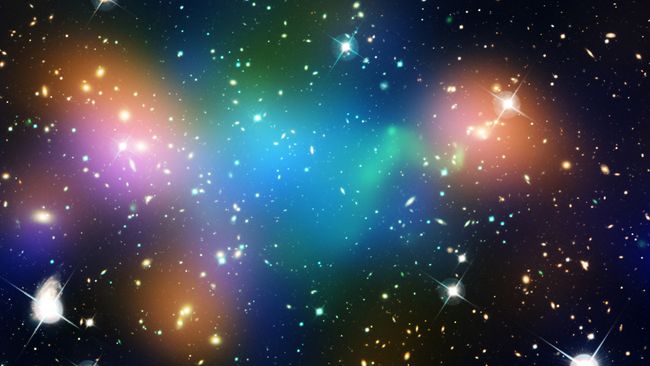Dark matter might possess its own ‘hidden’ periodic table of elements.
A novel theory proposes that dark matter could exist in various particles and weights, resembling the conventional elements found on the periodic table.
New research suggests that during the first few minutes of the Big Bang, the universe may have generated dark matter, which then became trapped in ultradense pockets. Some of these pockets later evolved into black holes, ultimately dissolving into multiple dark matter particle “species,” forming an elusive “dark matter periodic table,” according to the study authors.

Despite circumstantial evidence supporting the existence of dark matter, physicists still grapple with understanding its nature, as it remains invisible and constitutes the majority of the universe’s mass. Initial assumptions envisioned dark matter as a single, lightweight particle that rarely interacted with normal matter, but searches for such particles yielded no results. This led to speculation about the possibility of rarer but heavier dark matter particles, although creating models for the early universe with the right number of such heavy particles proved challenging.
The recent study, available on the preprint database arXiv since October, introduces a novel approach to produce massive dark matter particles shortly after the Big Bang by introducing black holes into the equation. The researchers suggest that during phase transitions in the early universe, ultraheavy dark matter could become trapped, forming bubbles in which the dark matter collapsed to create black holes. These black holes, however, evaporated through Hawking radiation before the appearance of normal matter, releasing new dark matter particles as they did so.
The evaporation process generated various dark matter particle species, each with distinct characteristics such as mass, speed, and interaction with normal matter. While experimental evidence for this concept remains speculative, direct detection of dark matter particle species could lend support. Astronomers are exploring ways to observe gravitational waves from the Big Bang, offering potential insights into this critical epoch in the universe’s history and uncovering new interactions among different dark matter species, contributing to a complex web of invisible physics throughout the cosmos.
Do not forget to share your opinion with us to provide you with the best posts !



0 Comments